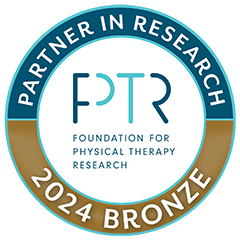KAATSU - The Pressure Training from Japan Book
A comprehensive, authoritative book on the science, principles, methodologies, and physiological mechanisms of KAATSU for sports, rehabilitation, and wellness by German sports scientist Robert Heiduk.
Description
His intuition for innovative developments brought early adopter Robert Heiduk with a small international group of like-minded people directly to Japan to the inventor of Japanese pressure training. On the basis of this encounter and extensive research, the sports scientist created this comprehensive standard work, which is aimed at coaches, athletes, physiotherapists, doctors, scientists, and students who would like to gain a deeper insight into the methodology of the original protocols of the KAATSU inventor Yoshiaki Sato. The original core concepts behind KAATSU were not yet available in this form and have been further developed in theory and practice by Robert Heiduk in a new structured approach. The book arouses curiosity about Japanese pressure training and its new possibilities in sport and therapy, but also especially for older people and in corporate health management. This is the English version of the book.
Table of Contents
Foreword
Made in Japan
Genesis
- The Moment of Discovery
- From Revolution to Evolution
- Development of KAATSU Equipment
- Interview with Yoshiaki Sato
- The KAATSU Columbus
Terminology and Systematization
- What is KAATSU?
- KAATSU and BFR
- KAATSU Cycle
Basics of KAATSU Methodology
- Pressure Instead of Load
- Repetitions, Sets and lnterset Rests
- Effort
- Frequency and Duration of Training
- Can KAATSU Replace Traditional Strength Training?
- The Correct Pressure
- Special features
- Cuff confusion
- Individualization
- Control parameters
- Intermittent pressure mode
- The Gap Between Science and Practice
- Safety
Physiological Basics
- KAATSU in Simple Terms
- Local Vascular Mechanisms
- Changes in blood circulation dynamics
- Shear forces and production of nitric oxide
- Stimulation of erythropoiesis
- Arterial stiffness
- Local Muscular Mechanisms
- Hypertrophy and atrophy signals
- Metabolic stress
- Neuromuscular activity
- Long-term effects
- Activating satellite cells
- Sore muscles
- Systemic Mechanisms
- Cross-transfer effects
- Hormonal reactions
- Lactate as a signal molecule
- Bone metabolism
- Neurophysiological factors
Fields of Application
- Competitive Sport
- In the Water
- Enhancing Recovery
- Mobility Training
- Motor Control and Skill Training
- Endurance Training
- Rehabilitation and Therapy
- Training with Elderly People
- Corporate Health Management
- Training Program Design
Future of KAATSU
- The Fourth Industrial Revolution
- Virtual Reality
- Space Tourism
- Conclusion
Literature
About the Author
Robert Heiduk is a German sports scientist and product scout for cutting-edge sports technology. For more than a decade he has been active in the education of coaches and in health consulting for companies like Google or PPG Industries. He has experience as an international lecturer and book author. Robert Heiduk's motto: "Whoever wants to go to the source must swim against the current."

